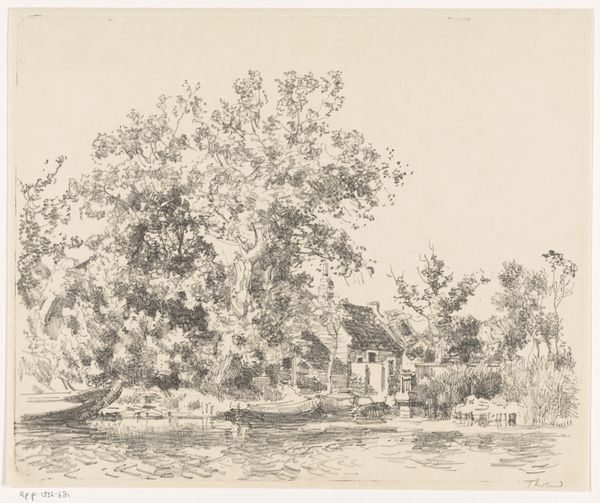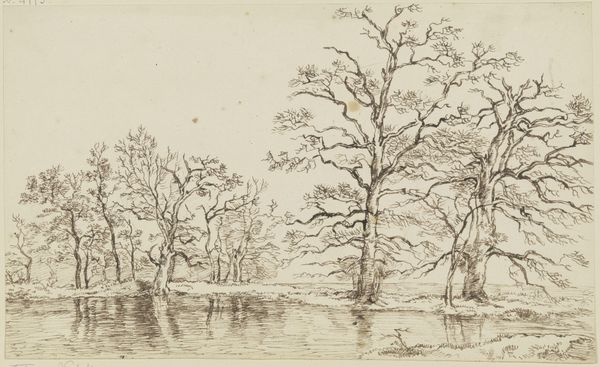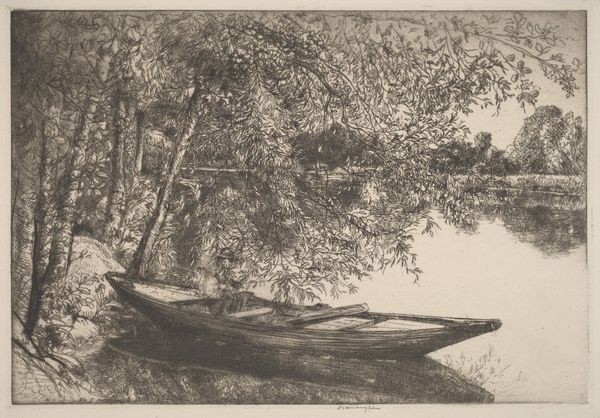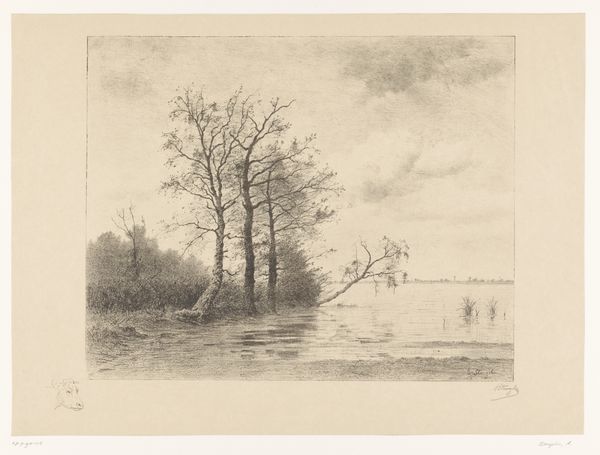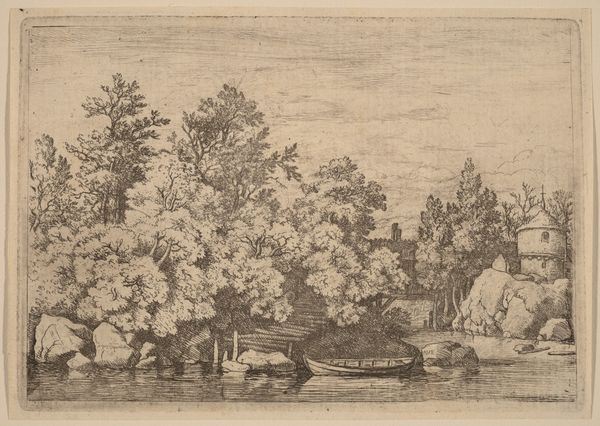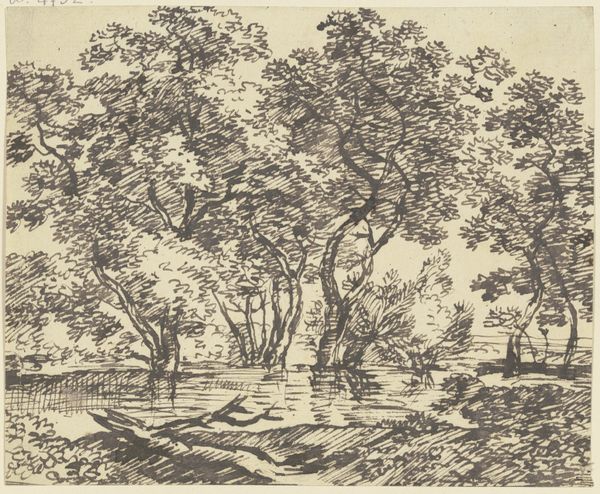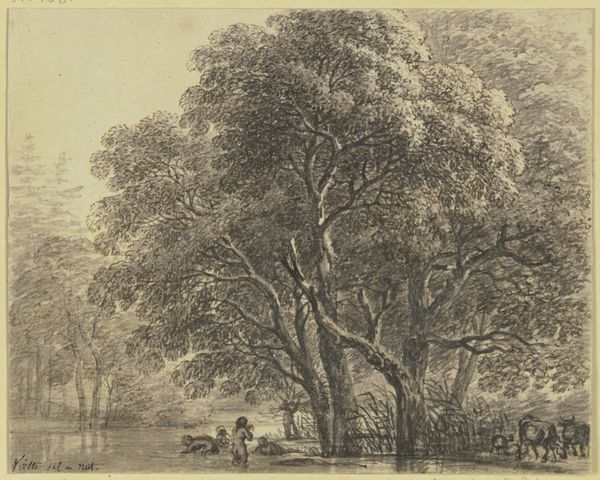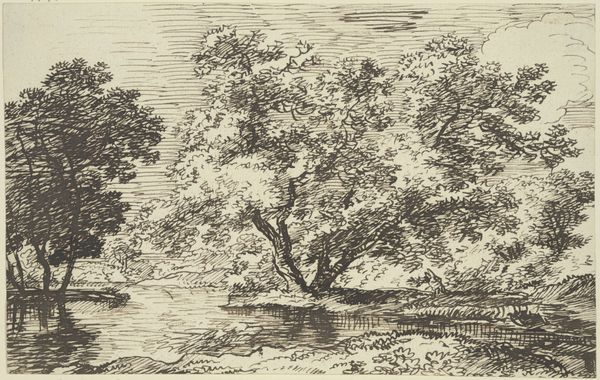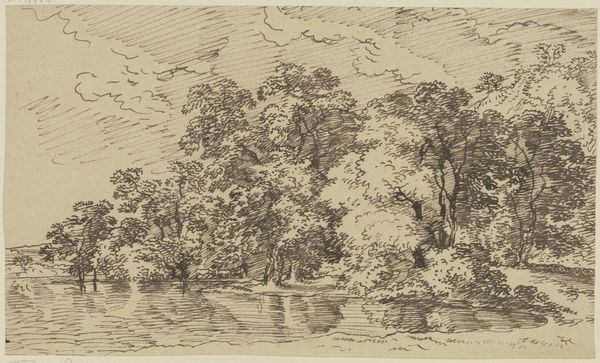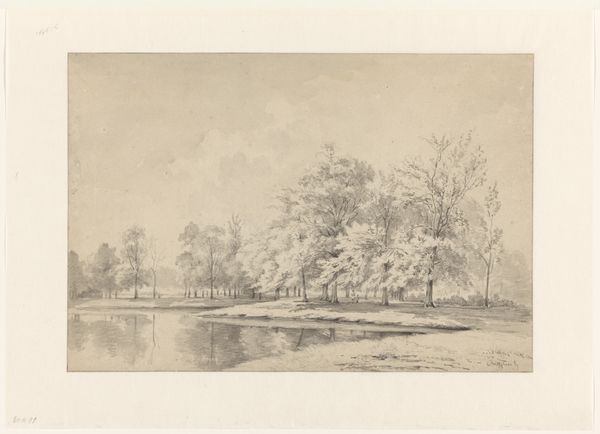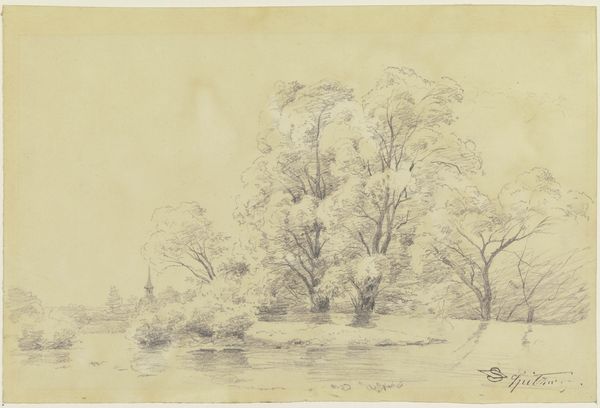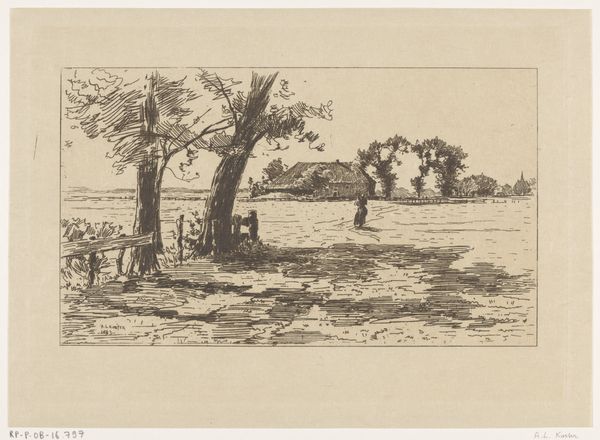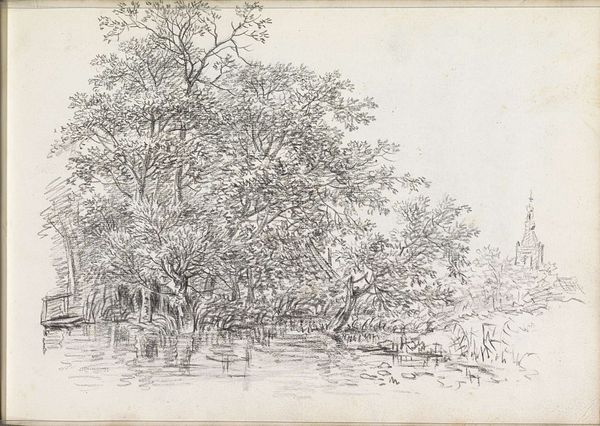
drawing, etching, ink
#
drawing
#
ink drawing
#
etching
#
landscape
#
etching
#
ink
#
15_18th-century
Copyright: Public Domain
Curator: Ah, I see you're looking at "Parklandschaft mit tempelartigem Bau," which roughly translates to "Park Landscape with Temple-like Structure." This lovely drawing using ink and etching comes to us from the 18th century, its creator being Franz Kobell, and is currently housed here at the Städel Museum. Editor: My first impression? It feels almost dreamlike. Like a faded memory surfacing from the subconscious. The monochrome palette and the almost ghostly temple contribute to that feeling, I think. Curator: That's a fascinating read! The monochrome certainly strips it back to basics, focusing us on form and symbol. Temples, of course, historically represent sacred spaces, sites of divine connection and contemplation, often recurring in landscape art of the period. I wonder, what emotions does this specific architectural representation conjure? Editor: A sense of yearning. The temple is somewhat obscured, partially hidden by the trees. It creates a distance, an unattainable quality. Is it a spiritual longing? Or simply the artist's nostalgia, framed and re-presented to us through a particular idealization of the past? It also kinda reminds me of an album cover, for some long-lost folk record you know? Curator: The reflection of the trees and the temple in the water is especially important here, the doubling suggests harmony but also the shifting, mutable nature of perception and reality. Landscape art in this era served to demonstrate man’s dominion over nature, whilst simultaneously showing respect for the natural order and spiritual significance, how nature and our symbols interplay with each other. Editor: Sure, control is visible here in the overall composition. And, that’s right, nature's showing some wild stuff here too; I find myself more drawn to the wildness in the reflection that you noticed, how the mirrored world hints at something that is uncontrolled or mysterious in the everyday reality we see. The rough and natural shapes almost want to hide the clearly-ordered design. Do you see the temple that way too? A hint to some unknown space? Curator: Perhaps it reflects the shift from Enlightenment rationality to the budding Romantic sentiment. We see a desire to reconcile controlled neoclassicism, that architectural style present there, and that emerging emphasis on emotion, nature’s unbridled strength. So you could even view this composition as mirroring, if you will pardon the pun, that particular historical and intellectual tension! Editor: Maybe Kobell was just thinking it'd make a kickass backdrop for a philosophical music video. Food for thought as we keep walking and absorbing these amazing pieces! Curator: Indeed. Let's proceed, with those interpretations swirling! A fruitful journey into art, as ever!
Comments
No comments
Be the first to comment and join the conversation on the ultimate creative platform.
